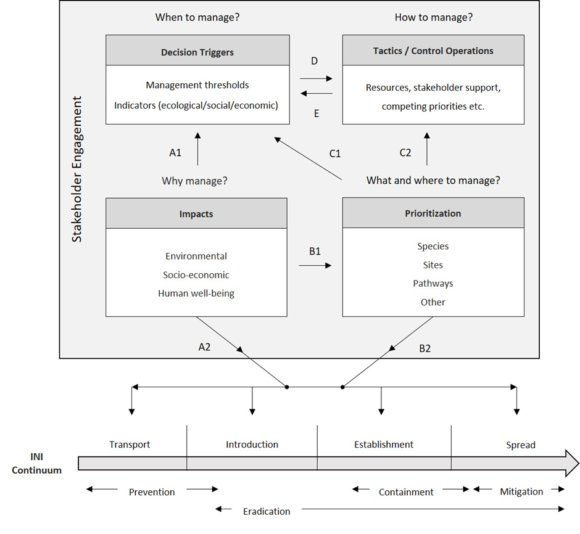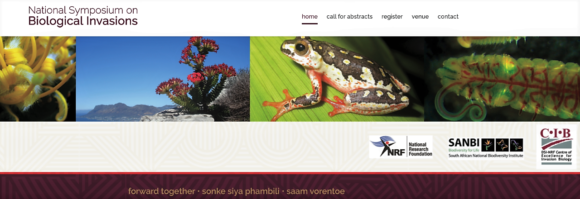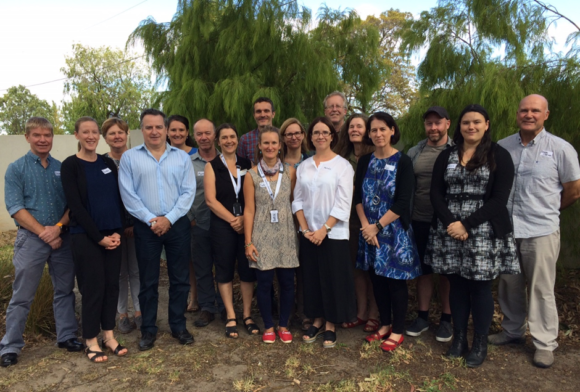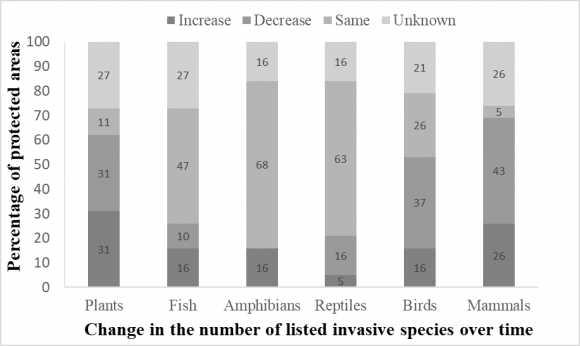24 August 2021 | By Luke Potgieter
Urban areas are foci for the introduction of alien species and very often act as launching sites for invasions into natural ecosystems that adjoin urban ecosystems. Until very recently, the study of biological invasions has focused on developing concepts and frameworks mainly for (semi)natural ecosystems.
However, interest in the phenomenon of invasions within urban ecosystems is growing rapidly, as the number and complexity of problems associated with invasions in these systems has increased. An international workshop to address biological invasions in urban ecosystems was hosted by the DSI-NRF Centre of Excellence in Invasion Biology (the C·I·B) in Stellenbosch in November 2016. This led to the creation of the Global Urban Invasion Consortium (GUBIC) and to collaborations on many aspects of invasions in towns and cities.
A recent initiative of GUBIC involved research to explore why decisions to manage invasive alien species (IAS) in urban areas are seldom informed by objective, evidence-based criteria. Dr Luke Potgieter (former C·I·B PhD student) together with a team of international researchers, including C∙I∙B Director Professor David Richardson and C∙I∙B Associate Dr Mirijam Gaertner, reviewed the scientific literature on IAS management approaches applied in urban areas and evaluated whether prioritization, management thresholds, and decision triggers are used to inform the management of biological invasions.
The establishment and spread of IAS within and around urban areas threatens the functioning of ecosystems and the services they provide to urban inhabitants. Conservation practitioners in towns and cities around the world are facing increasingly complex decisions about why, what, where, and when IAS management is required. The factors informing these management decisions in urban areas remain unclear.
Assigning some form of critical threshold that, if crossed, would trigger action (a “decision trigger”) has been flagged as a useful approach to evidence-based management. Decision triggers offer urban conservation practitioners clarity and precision about when intervention in a system is justified. However, the application of thresholds and decision triggers in the context of IAS management in urban settings remain largely unexplored.
The review showed that the ways in which IAS management is prioritized in urban areas, and the application of management thresholds informing the decision-making process, are still poorly understood and biased in many ways. This suggests that decisions to manage IAS in urban areas are often made on an ad hoc basis, frequently in response to emergencies or public pressure. This means that decisions are very often taken without considering objective and transparent criteria, and/or are prompted by external factors (such as funding availability) that are not recorded in the formal literature.
“For invasive alien species management to be effective in urban areas, collaborative, evidence-based thresholds and tailored prioritization schemes should be integrated into management frameworks to better inform decisions about what, where, and when IAS management is required” says Luke Potgieter.
Read the full paper
Potgieter, L.J., Aronson, M.F.J, Brandt, A., Gaertner, M., Mandrak, N.E., Richardson, D.M., Shrestha, N. & Cadotte, M.W. (2021). Prioritization and thresholds for managing urban invasions. Urban Ecosystems. DOI: 10.1007/s11252-021-01144-0
For more information, contact Luke Potgieter at lukepotgieter2@gmail.com




